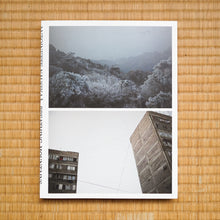
都会で生活をしている中、アントワネット・ナウシカは静けさと孤独を必要としていた。そして彼女が行くべき場所だと確信したのが山でした。 日本、ギリシャ、トルコ、中国の山々で作成された写真、ドローイング、彫刻。 〈全編英語〉
Five years ago, Antoinette Nausikaä decided she wanted to observe mountains. In the middle of her frantic urban life she developed a need for stillness and solitude, and she was convinced that mountains were the place to go.
Soon however, she discovered that ‘pure’ silence and solitude were nowhere to be found. Looking for the timeless spirit of the mountains, she found fleeting traces of human existence everywhere.
She lived and worked on and around eight ancient mountains in Europe and Asia, each one of them a sacred icon and a pilgrimage destination. She travelled to Mount Fuji (JP), Olympus (GR), Ararat (TR) and the five most sacred mountains in China, the Wǔyuè. She observed them, climbed them, photographed, made drawings and dug in the earth for clay to make small sculptures.
And so, almost casually, her quest developed into an investigation and presentation of one of the most pressing philosophical themes of this moment: the Anthropocene. The Anthropocene, as interpreted by many authoritative contemporary philosophers, deals with the idea that man and nature are fundamentally separated. An idea that is a typical product of nineteenth-century Romanticism, but is now considered to be out-of-dates. After all, our human presence is omnipresent, visible even in the geographical layers of the Earth.
20,8 × 27 cm, 180 p, ills colour, softcover, English
ISBN 9789490800963
Publisher: Art Paper Editions
Edition of 500
October 2018



















